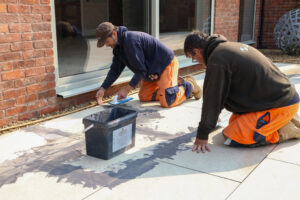Jim's Top Tips
Large format and very large format tiles are becoming increasingly popular. As these tiles can be over 3m long, a number of tilers are asking “How do we tile these?” Jim Stott, our Technical Director has the following tips:
- Be prepared, make sure you have the right equipment for the job.
- As ever, the substrate needs to be primed and the back of the tiles clean and free from dust.
- Most obvious challenges are (i) injury – these tiles are heavy and awkward to handle; (ii) breaking the tiles – they can be thin so more prone to breaking when handling; (iii) air pockets/bubbles – correct application of adhesive and the use of beaters are essential; (iv) lippage – it’s important to use a suitable levelling system such as the RLS.
- Jim recommends using a suitable handling system such as the Easy Move or the T-Move systems we sell. These can be used along with our CAM system to move the tiles from the crate, ease buttering the back and then installation. We also offer modular benches to make it simple to process tiles on a suitable flat surface.
- Cutting tiles over 3000mm can be a challenge. Our Free-cut system anchors a rail onto the tile and then supports different tools for cutting the tiles.
- Large format tiles ALWAYS require back-buttering. Always apply the adhesive in stripes running parallel with the short edge to ease getting rid of air pockets/bubbles.
- The floor or wall also needs the adhesive applied in stripes in the same direction as the adhesive on the tile.
- Use a thin trowel (3mm) with notched teeth for the back buttering and a bigger trowel (10mm) with notched teeth for applying adhesive to the wall or floor. The sum of the two trowels notch sizes ought to equal or be greater than 13mm (3mm + 10mm + 13mm). Slant ridge notched trowels give the best coverage, such as our 182HVF10.
- Beat the slabs from the centre to the edges.
- Use Raimondi RLS system for best levelling results.
If you want to discuss your large format tile job, feel free to phone Jim on 07860 502410. He’ll be happy to discuss your project with you and suggest suitable equipment and tools you may wish to consider.




